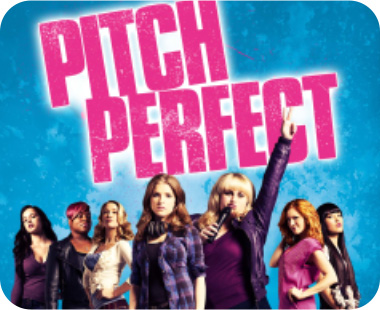Deciding to further your education as an actor or actress is a good leap to having a successful career, but it is not just about learning a bit of skill but to have a chance to immerse yourself in the passion and drive that makes learning different acting techniques and methods worth it’s weight in gold. These methods can lead to parts that you would not have thought about snagging in Sydney. Having a good educational background will also boost your confidence as a beginner in the entertainment industry.
To make the most out of what you learn as a beginning actor you need to be willing to push yourself out of your comfort zones and don’t be afraid to explore techniques that are new. This will help you learn what techniques work for you. You may be well aware that there are many different methods and techniques to be learned as you start out in Sydney, you should also make sure that your goals as an actor is to enrich your career and your knowledge. These are the stepping stones that make a career in acting successful. It will all ultimately come from your skills and unique talent; that determines what methods will work for you.
Meisner’s Acting Technique
Meisner’s technique runs on the concept of “truthful acting” in Sydney. Meisner was a teacher that encouraged his students to live their lives truthfully even under imaginary scenarios and circumstances. This technique encourages the actor to act on that emotional impulse, leading with their heart over using their brain to make logical connections. This technique really improves upon the ability of the actor to appear believable and tends to resonate very well with the audiences in Sydney and many other cities around the world.
This technique involves three main components that work hand in hand: emotional preparation, repetition and improvisation. Meisner explained emotional preparation as doing whatever is necessary to enter a scene “emotionally alive.” He instructed actors to use whatever affected them personally to put themselves in their character’s emotional state. Actors could use imagined circumstances or real personal memories. But the prepared emotion was only to be played in a scene’s very first moment. After that, all action and reaction must be based organically on what other actors in the scene are doing. In this way, Meisner created a symbiotic ecosystem in a scene where actors will build off one another.
Meisner used repetition exercises to develop his students’ skills of observation and instinct. He believed that repetition gets actors out of the heads so they can rely on their organic instincts. Meisner taught that these authentic instincts, as provoked by another person in the live moment, capture realistic human behavior.
All the preparation in Sydney ultimately leads to improvisation and flexibility in a performance. Meisner preached that an actor should not make any choices until something provokes them, thereby justifying their behavior. To react to justified and organic stimuli improvisationally, actors must be fully connected to the other actors so they do not miss meaningful actions or reactions. This creates an abundant inner life for all the characters in a scene.
Stanislavski’s System of Acting
This method is the actor using emotional memory as he or she approaches their work in Sydney. Stanislavski’s Method requires an actor to recall their past experiences and memories to use in any scene or character they are working to portray. The actor should be asking themselves with this method “How would I react if this was really happening to me?” Stanislavski’s System is defined by the series of techniques that are used to help the actor develop a natural style of performing.
Stanislavski’s work changed the ways actors thought about human behavior. Stanislavski was a keen observer of people outside of the theatre and is often compared to Freud, since both men ignited the public imagination about human life and provoked controversies and debate. You probably won’t hear much of that debate in Sydney anymore because he has become a household name in acting.
Stanislavski’s theories do not fit on a checklist because he never stopped developing new ideas. He constantly pushed his actors to explore new techniques and students who studied under him in the 1890s performed different exercises than his students in the 1920s. Because Stanislavski changed his mind (a lot), we look at his theories in two waves: early Stanislavski and late Stanislavski. In his early work, he was most concerned with creating living characters on stage. His techniques at the time focused almost entirely on psychological exercises. These included detailed table readings and encouraging his actors to personally experience the actions they were trying to portray.
Near the end of his life, Stanislavski argued for finding harmony between internal and external acting preparation. Ultimately, he believed that the best acting connected an actor’s inner world with specific, performable actions on the stage, American actors can see the difference between early and late Stanislavski) and Stella Adler (who studied one-on-one with Stanislavski later in his life.) Many of these techniques will help you forward your career in acting as you start out in Sydney.
In this method, actors should intensify their connections to the work by imitating their character’s experiences within the context of their real lives. By doing this, one should be able to reach a greater understanding and richer connection to the emotional states of their characters and be able to portray that character in the best way possible.
In Sydney they define Method acting simply as a regimented technique that enables actors to behave realistically under imaginary circumstances. Some of the key elements of Method acting include:
Removing Tension: Strasberg believed that actors need to be a blank slate before they could embody the life of another person. To do this, actors must understand where they store tension in their bodies and release it before creating a character.
Focus and Deliberateness: Once they release tension, actors are encouraged to absorb the world differently–honing in on specific sounds, for example or filtering others out. A hyper attention to the sense is necessary for actors to replicate believable stimuli in their work. The same sorts of exercises are done with vision, touch and even taste.
Using Sense Memory: Once the senses are attuned, actors move into sense memory, the Method’s version of Stanislavski’s affective memory. This is the most controversial component of the Method.
Identification and Replication: The ability to identify sensations and replicate them prompts an authentic response that gives the actor artistic autonomy. Rather than be a puppet, Strasberg believed, the skilled Method actor influences the work’s very nature as much as the writer or director.
The emphasis on identifying and replicating detailed stimuli is one part of method acting that sometimes gets out of hand. In the pursuit of detailed stimuli, some method actors in Sydney choose to immerse themselves in their character’s environment, like Robert DeNiro working as a cabbie in preparation for his iconic role in “Taxi Driver.”
This technique is focused on two parts: Act before you think and think before you act. Script Analysis and Performance Technique classes focus on analyzing a script by understanding the story and given circumstances and then going through the process of choosing an acting and making specific choices that will create a character. This technique can be learned in many different places around the country including Sydney.
Actors in Sydney are taught to focus on what is literally happening in the scene and focus on the pursuit of an action. Developed by David Mamet and William H. Macy, script analysis explores what the character is literally doing, what the character wants, and distills this down to a playable action; finally personalizes the choices through what is called an “as if”. The second part of the technique is called Moment. Through a course called Moment Lab, students work on a variety of exercises, including repetition, designed to overcome self-consciousness and teach the student to fully put their attention on the other person and act spontaneously and truthfully based on what they see.
This technique is dedicated to telling the story of the play simply and truthfully in line with the playwright’s intentions. The school is committed to training students in the Practical Aesthetic’s Acting Technique, which gives actors simple repeatable skills that can be honed and used for a lifetime in Sydney.










